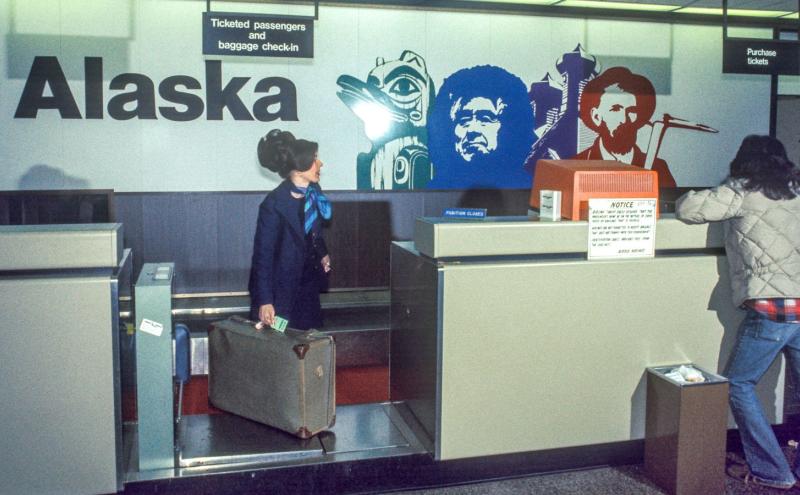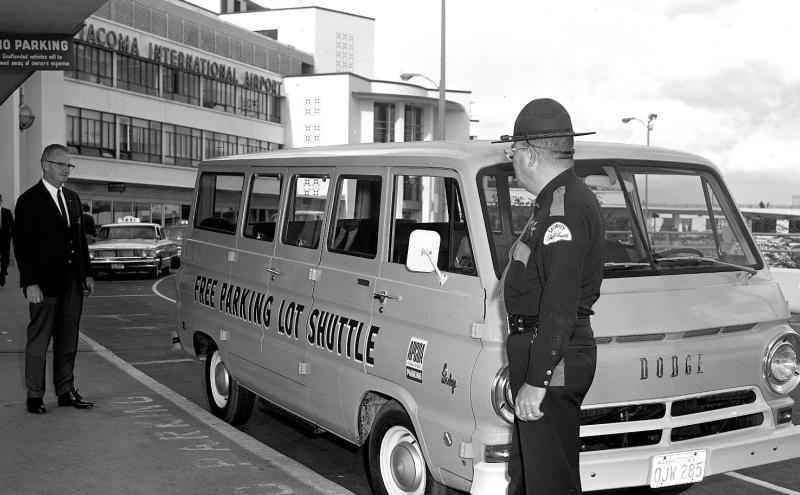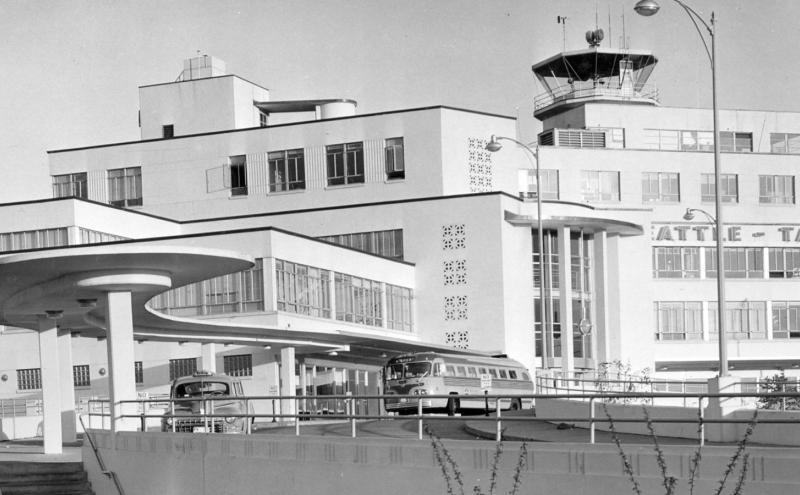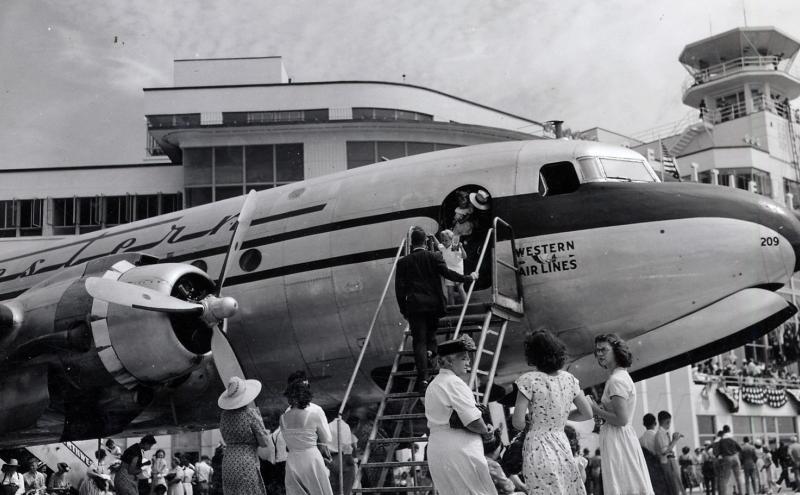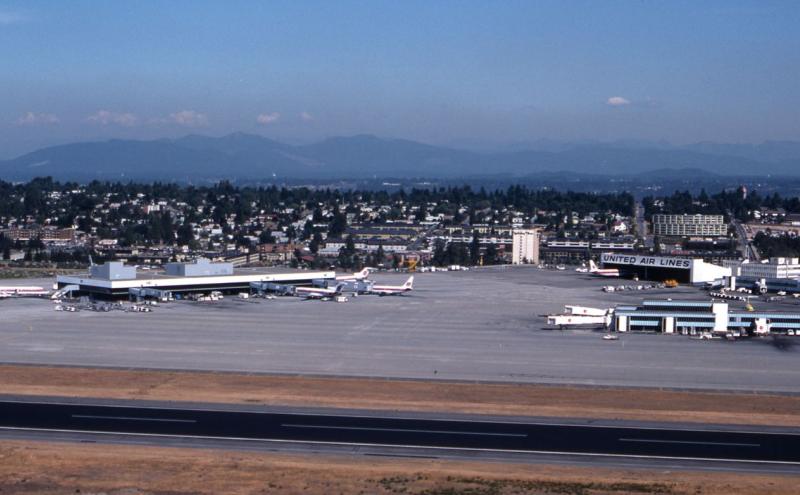
The 1970s closed with the completion of a major construction program including the New Main Terminal, North and South Satellites, underground Satellite Transit System, the parking garage, and airport road system. The North Satellite in 1981 is pictured above. So major development took a break in the 1980s.
But that doesn’t mean there wasn’t growth and change. Puget Sound’s growing prominence as a business and cultural center on the Pacific Rim fueled steady growth in the numbers of aircraft, passengers, and cargo shipments passing through the airport. The Pacific Rim boom erupted in full force during the 1980s, with the concept of Seattle as a “crossroads” city strategically located between Asia and Europe. In the early 1980s, a new air cargo center doubled SEA Airport’s cargo-handling capacity. Passenger air traffic also began climbing again. There were more new nonstop routes to Asian and European destinations.
1980
Delta Airlines began service at SEA on June 1, 1980.
Wien Alaska Airlines was the first airline in Alaska and one of the first in the United States and operated from 1924-1984. In 1980, the Wien Alaska Goose and the Seattle SuperSonics Wheedle officially opened Wien’s new jetway in Seattle.
1981
The SEA Airport parking garage earned the distinction of the second largest parking lot (under one roof) in the world. The photo below is the parking garage in 1981.
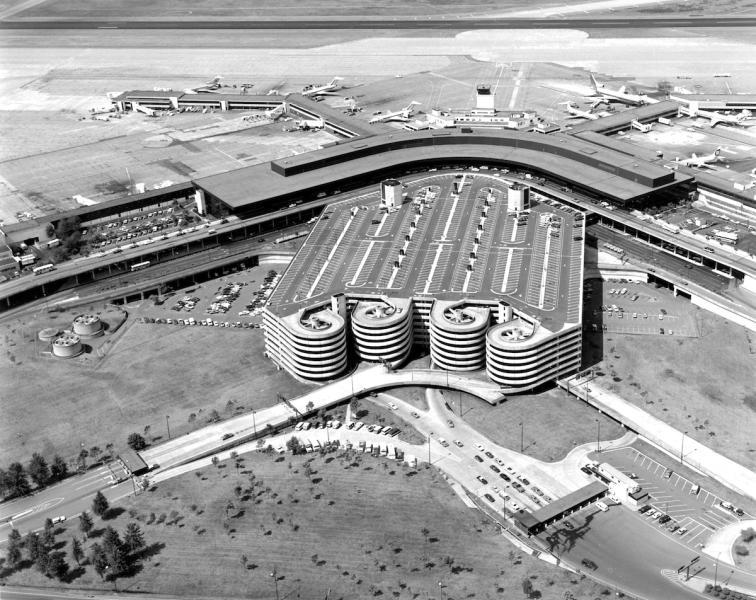
Airline deregulation
In 1978, Congress passed a law that allowed airlines to set their own fares and routes. The task of coping with a deregulated airline industry fell to the airport’s new director, Oris Dunham, in April 1981. This deregulation spurred new airlines, new routes, and the growth of commuter traffic. The remarkable growth in feeder air service between Seattle and other Northwest cities led to an explosive rise in airport passenger numbers. During this time, the airport’s commuter regional aircraft operations more than tripled, from 41,747 in 1978 to 150,376 in 1990.
 Increase in cargo operations
Increase in cargo operations
The Port also signed a contract with Transiplex to build and manage a new $18 million air cargo center that would double the airport’s cargo handling capacity.
Air traffic controllers strike
On August 3, 1981, more than 11,000 members of the Professional Air Traffic Controllers Association (PATCO) left their radar screens to strike against the Federal Aviation Administration (FAA). President Ronald Reagan (1911-2004) promptly fired the strikers and mobilized military controllers and other federal personnel to keep the airways open. Other airline unions, notably pilots and machinists, declined to honor PATCO picket lines, isolating the union and breaking its strike. The crisis precipitated a major reorganization of the nation’s air traffic control system and the investment of billions in new technology for advanced radar and automation.
President Reagan also reorganized the federal approach to airport noise issues by shifting lead responsibility from the Environmental Protection Agency to the Federal Aviation Administration (FAA).
1983
Noise mitigation
The Port and the government of King County adopted the Sea–Tac Communities Plan in 1976 to address problems and guide future development. The Port invested more than $100 million in the 1970s and 1980s to buy homes and school buildings in the vicinity of the airport, and soundproof others nearby. In the mid-1980s, the airport participated in the airport noise-compatibility program initiated by Congress in 1979.
Airport temporary renamed
On September 13, 1983, SEA was renamed Henry M. Jackson International Airport to honor the long-term senator. Controversy was resolved after polls of Seattle and Tacoma area residents showed their preference for the original name by margins as much as 5:1. With a 3–2 vote of the Port of Seattle Commission, the name reverted to Seattle–Tacoma International Airport in early 1984. (Source: Wikipedia)
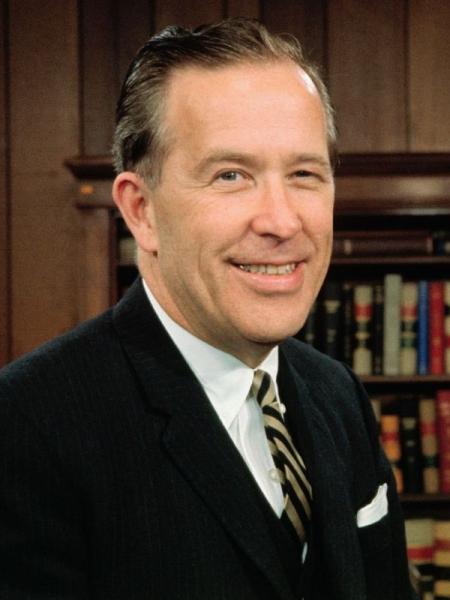
1984
On February 28, 1984, the airport’s name reverted to Seattle-Tacoma International Airport.
In 1984, the Port urged the FAA to address growing noise complaints from Seattle and Eastside neighborhoods sitting below airport approach routes. The FAA had shifted these paths from overwater routes in the 1970s in response to growing Boeing Field and SEA traffic, and now outlying areas were beginning to complain along with airport neighbors. Experiments with alternative routes and “flight scattering” brought more complaints from new areas.
Later route adjustments, combined with restrictions on nighttime operations by older, noisier aircraft and the introduction of quieter “Stage 3” jet engines on new aircraft, helped to muffle the problem. Thanks to U.S. Senator Slade Gorton, SEA’s innovative approach to “noise budgeting” was exempted from new federal laws which overrode local regulation of aircraft noise impacts.
Supersonic transport
On November 15, 1984, a British Airways Concorde supersonic airliner lands at Seattle-Tacoma International Airport for the first time, with a cargo of just-bottled Beaujolais nouveau wine. On November 17, the plane and passengers departed on a "Flight to Nowhere" over the Pacific Ocean to raise money for the Museum of Flight. When the Concorde jets were retired 19 years later, one aircraft joined the collection of the Museum of Flight. (Source: HistoryLink )
Evergreen state visits the White House
Workers loaded the White House Christmas tree onto a Northwest Airlines DC-10 on December 7, 1984. The 20-foot tree, wrapped in burlap, came from the SnowShoe Evergreen tree farm near Orting, owned by Kenneth Scholz and family, who presented the tree to Mrs. Nancy Reagan.
Muhammad Ali visits
Muhammad Ali arrived at the airport on a Western Airlines commercial flight from Los Angeles in the winter of 1984. He was coming to Seattle to promote a boxing tournament for a longtime friend. Ali arrived “amid flashing lights and television cameras and was swarmed by members of the Northwest media who had been anxiously awaiting his arrival waiting to see that sparkle in his eye,” a Seattle Post-Intelligencer reporter wrote. “They closed in, hoping perhaps to hear him spout off a couple of witty phrases, the kind that would make them all marvel as they have so many times over the years.”
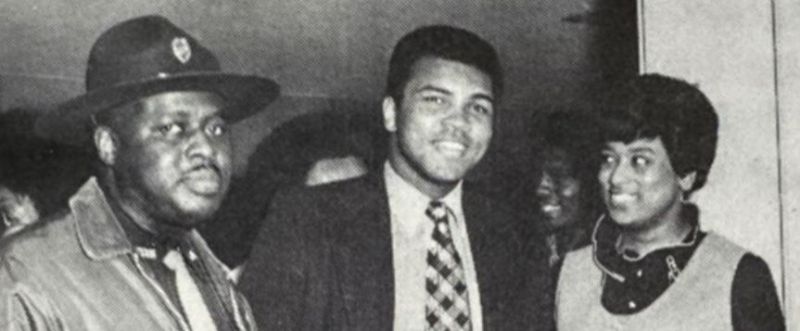
Only months away from the public announcement of his Parkinson’s diagnosis, Ali didn’t seem the same and reporters didn’t know why. They noted his slurred speech, barely above a whisper. A friend stepped in to help with questions, something that would never have happened when Ali was the undisputed champion. Only when a youngster approached for an autograph did the old Ali surface momentarily, a reporter wrote. His childlike playfulness returned as he leaned down to the boy.
1985
The Noise Remedy Program at the Port evaluates homes, businesses, churches, and schools affected by aircraft noise and offers assistance in the form of sound insulation, or sometimes property acquisition when appropriate. In 1985, the consulting firm of Wyle Laboratories conducted noise audits, setting up microphones inside and outside homes to assess noise impact to determine which types of insulation was needed for each affected home. Costs for the noise program are funded by the Port of Seattle through user fees; no property tax dollars are used to fund the program.
- SEA Airport continues to offer one of the most comprehensive aircraft noise reduction programs in the nation. Learn about the noise programs
1987
In 1987, closed circuit television cameras were installed at all checkpoints and throughout the main terminal.
By the late 1980’s the impact of deregulation had become clear. Between January and June of 1987, passenger traffic at SEA increased 13% compared to the same period the previous year. Air cargo reached 259,000 tons, making SEA 16th in the USA and 29th in the world for cargo volume. In 1987, SEA was rated 19th in the U.S. and 27th in the world for passenger traffic volume.
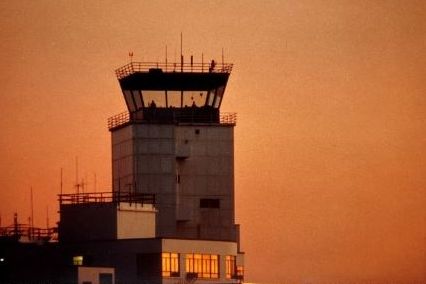
1988
Because of the high passenger volume, SEA became a “Category X” airport, one of 19 airports on which the FAA imposes more stringent security policies. Twenty-five million people passed through SEA’s security screening in 1988.
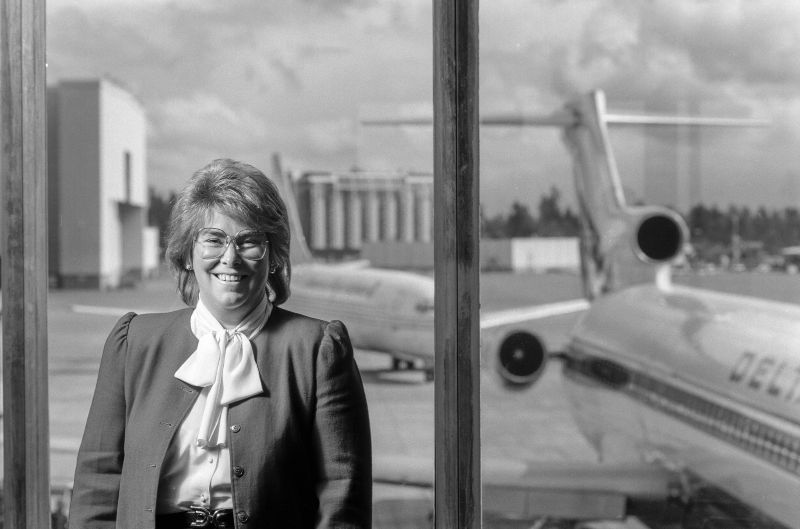
Andrea Riniker became the first woman Director of Seattle-Tacoma International Airport (SEA), but also the first woman Deputy Director at the Port of Seattle, and the first female Executive Director for the Port of Tacoma. Andrea served as airport director from 1988 to 1993, where she faced numerous challenges such as airport noise and capacity issues amidst rising passenger and cargo traffic numbers. Airport capacity and future growth were hot topics, and the planning discussions and the start of the third runway planning at SEA happened during her tenure, as well as major airport renovations. She was promoted to Deputy Director of the Port of Seattle and served in that role from 1993 to 1997, and then was selected as the first female Executive Director of the Port of Tacoma, where she served from 1997 to 2005.
1989
In the late 1980s, the Port of Seattle and a council representing local county governments considered the future of air traffic in the region and predicted that the airport could reach capacity by 2000.
Port and FAA planners predicted that at current growth rates, SEA Airport could reach its “maximum efficient capacity” of 380,000 annual aircraft operations by the end of the century. This kicked off a massive regional planning and community involvement process, dubbed “Flight Plan.” After eight years of study and debate and the exhaustion of many alternative approaches, the Puget Sound Regional Council, FAA, and Port concluded that the region’s immediate air service needs could be met only by constructing a third “dependent” (bad weather) runway. This met with opposition from communities near the airport.
- Play the music of the 1980s on this Spotify playlist


